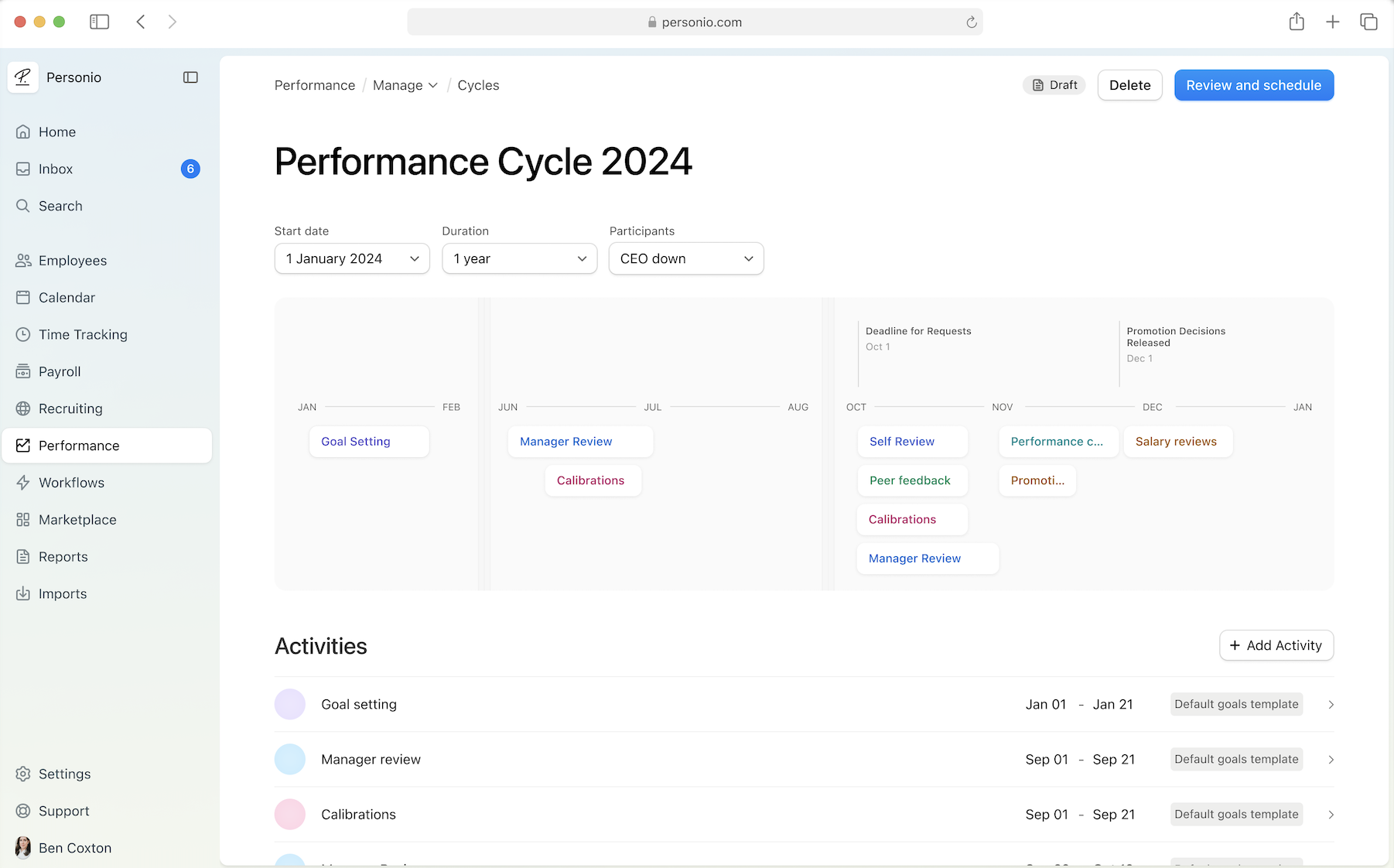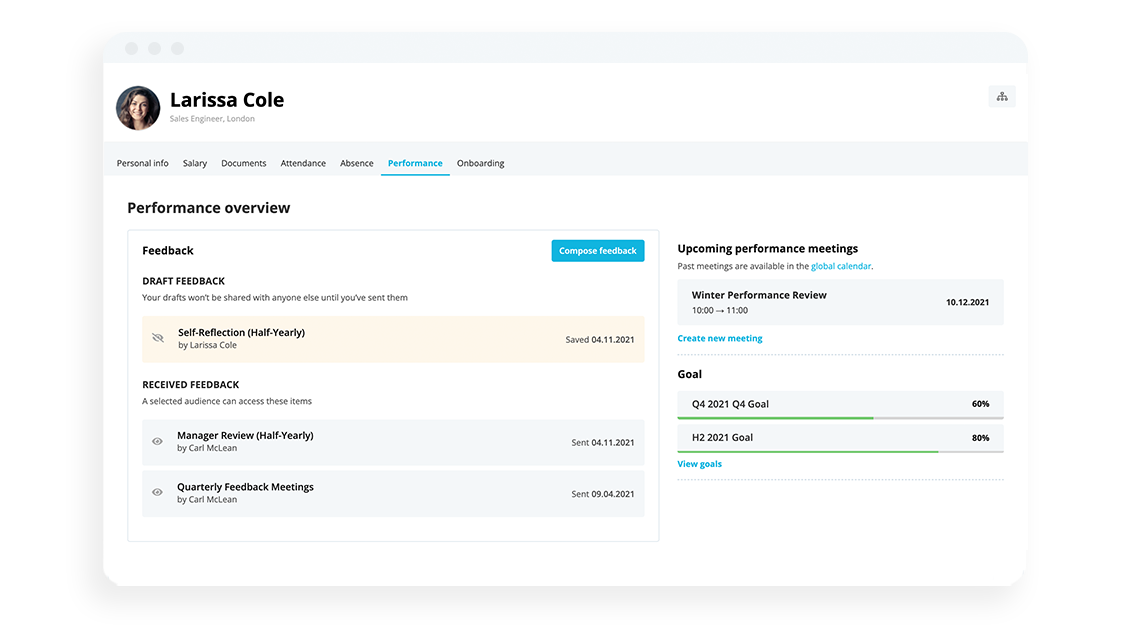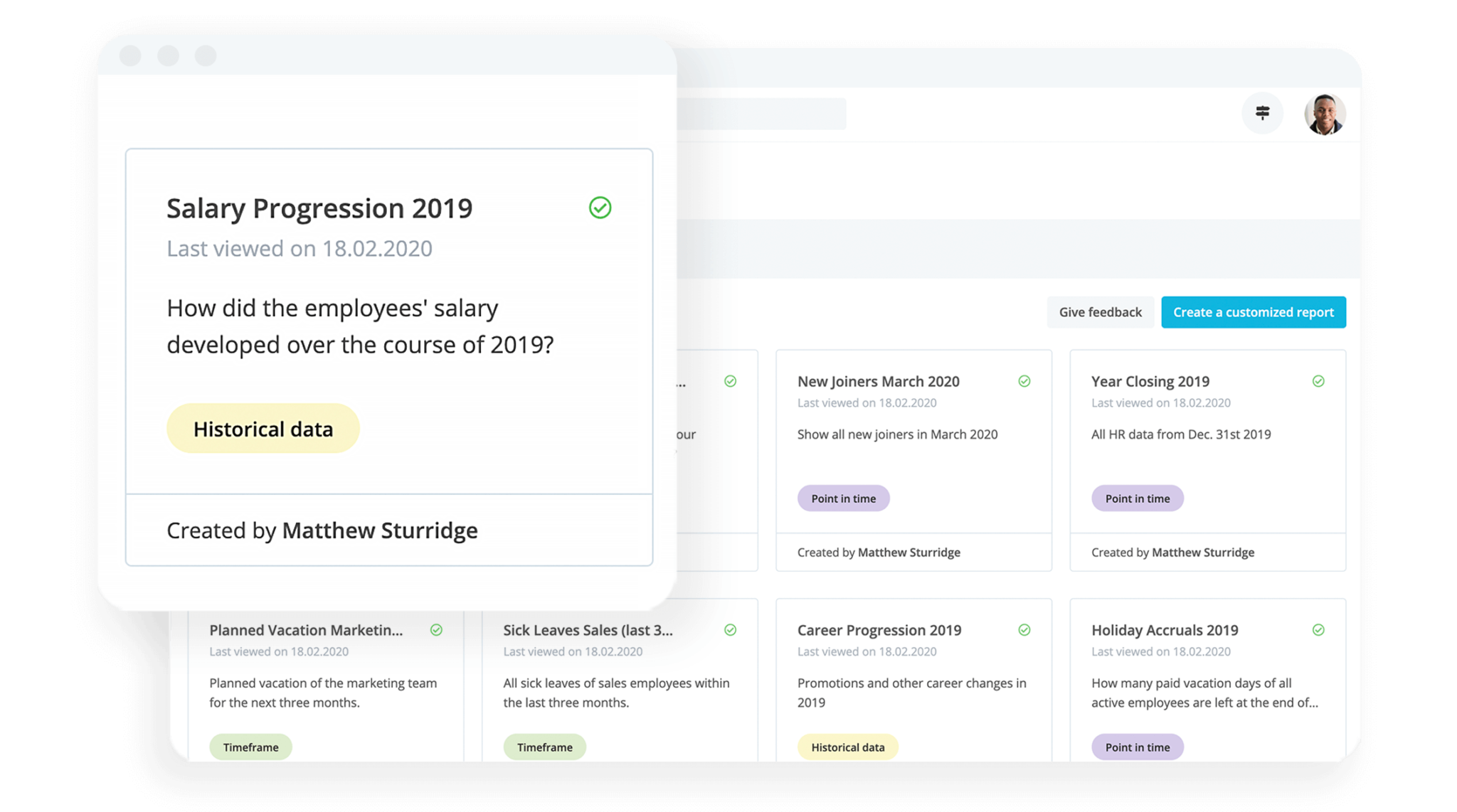
Revolutionise your processes
Check out the leading performance review software solutions to transform your workplace evaluations.
Read our guide24. February 2022
How To Identify A High Performer In Your Organisation

Last year alone, 47% of high-performing employees left their company. That's a lot of skill, knowledge, and talent out the door. In this article, we talk about how to identify your high performers, nurture them, and retain them.
Make your people a priority with a people strategy. Download our guide.What Is A High Performing Employee?
High performers are also known as high achievers. They’re the employees who consistently take on more work and leadership tasks and are eager to go above and beyond what their role requires.
Managers and leaders naturally gravitate to these employees when they need an extra hand or trusted insight into a project or process. They have a strong work ethic, history of success, and are someone others look up to.
To put it simply, they’re a model employee.
What Makes For A High-Performing Employee?
High-performing employees tend to have similar qualities. In a survey by Indeed, employers were asked what attribute their highest performer exemplified most.
The top five answers were:
Problem-solving
Drive
Self-direction
Strategic thinking
Initiative
Why Do Your High Performers Matter?
It’s simple: Because they’re better for business! Not only that, though, but high-performing employees can have a distinct effect on your company’s culture, work rate, and overall productivity.
In so many ways, your high performers dictate how work is done in your organisation. This is true both in an operational sense, but also in terms of quality and the soft skills that surround how work gets done.
High Performer vs. High Potential: What’s The Difference?
High-performer employees love what they do, and they do it well. They’re typically content to stay in their role/department and can continue to excel there for years to come.
While they may be open to taking on more responsibilities within their scope of expertise, they’re not eager to move up the ladder to management or leadership positions.
High potential employees don’t have the best performance record yet, but as their name suggests, the potential is there. The problem is, they either aren’t pushing themselves hard enough, or they don’t have the resources and support they need to become a high performer.
However, with the right support and guidance, they can be great candidates for management and leadership roles.
Focus on Your Top Talent With Strategic Performance Management

Whether running automated performance cycles, sharing feedback, or tracking goals, Personio offers a single place to focus on your top talent. Find out more by clicking below.
Focus On Performance With Personio4 Easy Ways To Identify High Performers On Your Team
While your best employees might boast impressive sales numbers or consistently beat your performance benchmarks, you also need to look at their behaviours and relationships within the workplace to determine if they’re a true high performer.
Take these four steps to gain a comprehensive understanding of a potentially high-performing employee:
Observe Behaviours
Many high performers will naturally stand out from the crowd due to how they interact with their team members on a daily basis. These behaviours can either be observed through shadowing or gleaned from their performance reviews and feedback:
They’re natural role models for those on their team and aren’t afraid to make executive decisions.
They’re always looking to innovate and are eager to take on new and challenging work.
They’re adaptable and can work through difficult situations without reactive behaviour.
They enjoy their work.
They share the organisation’s mission, vision, and values.
They seek input and feedback from their team members and managers to learn how to improve and grow.
They can make decisions quickly but also consider all outcomes and impacts.
They’re self-motivated and can be trusted to manage themselves and their workload.
Set And Review Key Performance Indicators (KPIs)
While observing behaviours can be subjective, using KPIs is an objective approach to identifying a high performer. The metrics selected should be clear and easy to measure, such as:
KPI Type | Defined |
|---|---|
Goal-Based Metrics | These metrics are tailored to the employee’s role and department and focused on the quantity of their work. Examples include revenue generated, profit, average sale/deal size, or the number of completed customer inquiries. |
Qualitative Metrics | How well do they do their job? This information can be based on customer satisfaction, service ratings, and reviews from their managers and peers. |
Effectiveness and Productivity | This KPI measures how quickly they meet deadlines, if they consistently achieve their goals, and if they prioritise the right work. Recommended metrics include the employee’s task completion rate, overtime per employee, and employee capacity. |
Initiative | Track how often managers/superiors need to step in to help the employee, how proactive they are, how often they help others, and how often they can resolve conflicts independently. |
Employee Morale | Through sliding scale surveys, you can measure the employee’s engagement, motivation, value alignment, and employee satisfaction. |
Involvement | Set benchmarks for a high performer’s absenteeism rate, number of days off per quarter or year, and how often they should participate in meetings or volunteer for opportunities. Then, compare those benchmarks against your employees. |
Conduct Employee Reviews And Interviews
Talk to their team members and managers to get a complete understanding of the employee, including their skills, strengths, and behaviours. Review their job performance and outcomes as well as their soft skills and relationships to determine if they have the qualities of a high performer.
This is where 360º feedback can come into play. Try and get a full view of feedback, from multiple parties, when it comes to identifying and assessing your high performers. After all, a coworker may have more insight than a manager when it come to how an employee performs.
Use A People Management Software
To seamlessly track employee behaviour, career progression, and development, use a modern people management software like Personio. It gathers everything you need to identify a high performer into one place, from their performance reviews and feedback to absences and more.
All Your People Data to Power Decisions

Run custom reports on your entire workforce with Personio, That way, you can identify high performers and hold onto your top talent, for longer. Click below to see it in action.
HR Analytics With PersonioHow Do You Properly Develop Your High Performers?
It’s second nature to focus on underperforming employees and provide them with the training and development they need to improve. But, it’s just as important (if not more) to give that same attention to high performers.
If high performers don’t receive the recognition and development they desire, they’ll look for it elsewhere—and you’ll lose your superstar employees.
Here’s how to nurture and retain them instead:
1. Identify Their Skills And Goals
The first step to nurturing a high performer is to see what their skills and goals are. From there, you can create a learning and development program that includes the resources, courses, support, mentorship, and opportunities they need to bring their best selves to work.
2. Recognise Their Achievements
High performers are naturally motivated, but that can wane when they’re not encouraged and recognised for their hard work. Two of the top reasons employees feel demotivated are because they feel undervalued and don’t receive recognition.
To keep your high performers motivated, meet with them regularly to encourage them, give constructive criticism, and reward their achievements.
3. Give Them Room To Grow
Give high performers opportunities for growth to keep them motivated and engaged in their work. Assign them challenging new tasks, bigger projects, or more leadership responsibilities.
Don’t overload them, though, or burden them with the tasks that no one else wants to do. This will only lead to them feeling either taken advantage of or burnt out.
4. Grant Them Autonomy
High performers are self-starters that don’t need to be micromanaged, and that’s a quality that should be honoured. Give them projects they can own and lead, so they have the opportunity to innovate and be efficient in their own way. This flexibility rewards their self-starter behaviour and, in a way, feels like a promotion.
5. Build Them A Community
Build a community of high-performers within your organisation. Connecting them with other high performers builds a powerful team wherein they can network, inspire each other, and become even more engaged.
6. Listen To Them
High performers are a well of knowledge for HR and managers. Ask for their feedback, consider their suggestions, and listen to their ideas and experiences.
You may also want to include them in the hiring process within their department or team and see who they recommend, as they may pick up on other high performer qualities in candidates.
How Do You Recruit High Performers To Your Organisation?
For managers and leaders, having high-performing employees means spending less time and energy micromanaging teams, recruiting, training, and putting out fires.
With the right employer brand, you can attract those superstar workers from the get-go. Here’s what it takes:
Tactic | Explained |
|---|---|
Be Specific And Descriptive | You want high performers to see themselves in your organisation's job descriptions and advertisements. Think about your team’s current high performers and include a description of their behaviours and track records in the description to attract like-minded job seekers. |
Be Transparent | A high performer will be aligned with your company’s vision, mission, and goals, all of which should be shared in your job ads, website, and social media channels. You should also showcase your culture and employee satisfaction by sharing your best employee reviews and team member features. |
Showcase Opportunities For Growth | High performers are always looking for new ways to innovate and grow. To attract them, make it clear that you promote and invest in your employees’ learning and development through promotions, workshops, courses, mentorships, and any other initiatives. |
Best Practice: Keep High Performers Engaged
When you have a high performer interested in joining your team, you need to keep them hooked. The recruitment process can take some time and can get frustrating and demoralising for an applicant if they don’t know the next step.
In your job ad, include a detailed description of the application and interview process, including estimated timelines. During the process, send check-in emails letting them know how the process is progressing and what they can expect moving forward.
This not only keeps them engaged with your team but also tells them that your company values transparency, clear communication, and most importantly, them.
